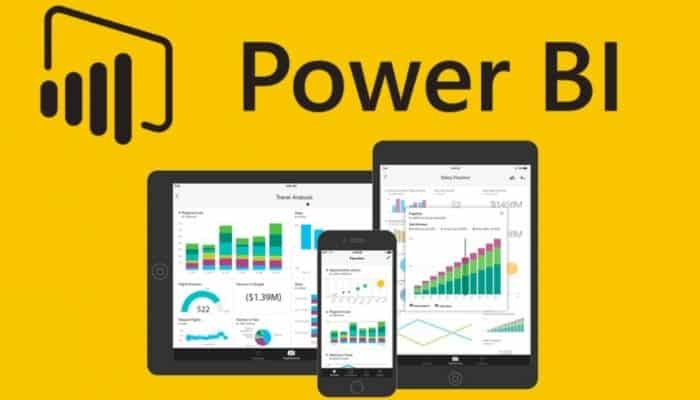Businesses are continuously looking for methods to effortlessly integrate smart analytics into their applications in the era of data-driven decision-making. In this area, Microsoft’s Power BI Embedded is a shining example of innovation, providing a flexible method for incorporating complex data visualizations into programs. To maximize their investment and successfully accomplish their analytics goals, businesses must fully grasp the complexities of Power BI Embedded pricing schemes. Today we’ll go into the world of Power BI Embedded Cost and examine tactical options for using this potent tool.
Empowering Apps with Smart Analytics
Data is no longer simply rows and columns on a spreadsheet. Data is a vital resource today that can uncover insights, drive informed decisions, and encourage innovation. Applications that provide data insights in a clear, engaging, and intuitive manner have an advantage in this market. This is where Power BI Embedded is useful.
Users may build detailed, aesthetically pleasing reports and dashboards with Power BI, Microsoft’s business intelligence product. By enabling developers to easily include these reports and dashboards into their applications, Power BI Embedded goes one step further. By offering real-time, interactive data insights and removing the need for users to hop between programs or tools, this connection improves the user experience.
Decoding Power BI Embedded Pricing Strategies
As businesses explore the potential of Power BI Embedded, understanding the pricing strategies becomes crucial to managing costs and maximizing value. The Power BI Embedded cost structure is multi-faceted and involves several components:
1. Capacity Tiers:
Power BI Embedded has many capacity tiers, each of which is designed to meet various usage and performance needs. A (lowest), EM (middle), and P (highest) are the levels. Performance directly depends on the capacity tier selected; larger tires offer quicker loading and response.
2. Usage Metrics:
Charges for Power BI Embedded often depends on how many “renders” or page views your embedded reports get. Every time a user accesses or loads a report page, a render is performed. Usage data, such as “Renders per Month” and “Renders per Minute,” assist you in setting prices that correspond to the expected usage of your service.
3. Additional Features:
Paginated reports, AI-driven features, and other features are available in Power BI Embedded. These characteristics can affect expenses while also increasing the value of embedded insights. Consider carefully if these features support the goals of your app and whether the accompanying costs are appropriate.
Strategies for Power BI Embedded Cost Optimization
Navigating Power BI Embedded pricing requires a strategic approach to ensure that your investment aligns with your goals and budget. Here are some strategies to consider:
1. Performance vs. Cost Balance:
Strike a balance between performance and cost when choosing a capacity tier. Consider your app’s requirements and select a capacity that satisfies performance demands without overcommitting resources.
2. Usage Estimation:
Calculate the anticipated usage of your app with accuracy. To choose the best usage-based pricing tier, examine past consumption statistics and project future patterns. This keeps use estimates accurate and keeps expenses in line with usage.
3. Feature Assessment:
Analyze the extra features that Power BI Embedded provides. Take into account their applicability and any potential to increase user engagement. A feature’s price may be justified if it greatly enhances the value of your software.
4. Scaling Strategy:
Create a scalable plan. Usage may increase if your program becomes more popular. To maintain a fluid user experience and prevent performance bottlenecks, take into account scalability needs while choosing capacity and consumption levels.
Leveraging Expertise: Power BI Embedded Pricing and Beyond
While understanding Power BI’s complexities and embedded pricing might be difficult, working with specialists can make the process much simpler. Utilize the skills of companies like EPC Group, who are renowned for their mastery of Microsoft technologies:
1. Optimize Costs:
The knowledge of EPC Group helps reduce the price of Power BI Embedded. They may examine consumption trends, suggest the most cost-efficient pricing alternatives, and stop pointless spending.
2. Technical Proficiency:
Power BI Embedded implementation calls for technical know-how. With the help of EPC Group, the integration process may be streamlined, lowering the possibility of mistakes and assuring efficient operations.
3. Strategic Guidance:
Based on the unique requirements of your app, EPC Group may provide strategic advice on pricing choices. Your judgments can balance cost and value with the aid of their expertise.
Power BI Embedded integration of smart analytics has the power to completely transform how users interact with apps. To make strategic investments that are in line with their objectives, enterprises must grasp Power BI Embedded pricing plans. Companies may reduce the cost of Power BI Embedded by taking into account capacity tiers, consumption analytics, extra features, and scalability.
Final words
The value gained by Power BI Embedded may be increased by working with professionals like EPC Group. Their skill in developing specialized solutions and cost-cutting measures guarantees that businesses strike a harmonic balance between the integration of smart analytics and financial concerns. Remember that the strategic choices you make about the pricing of Power BI Embedded will determine how successful your journey toward data-driven app augmentation turns out.
